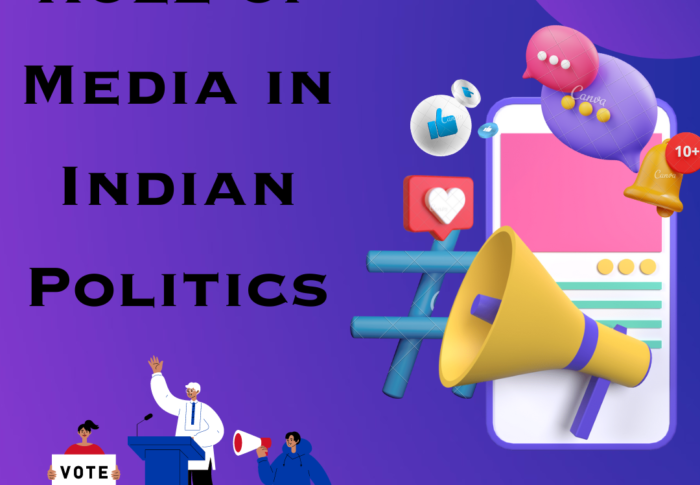
Toxic Masculinity and Popular Culture | Sociology
AUTHOR : Shivanshu Agarwal
ABSTRACT
In this research paper we will talk about what is Masculinity, what are the sociological impact of masculinity and relationship between masculinity and identity, how is masculinity different from the toxic masculinity, what is toxic masculinity and pop culture lastly, we will talk about the masculinity and popular cinema and relate it with some movies like Kabir Singh. And show the difference as to how these movies impact the behaviour of a male and how these movies create an impact in our society. After that I will give my findings, and suggestions on how to stop these types of behaviour in men so that our upcoming generations will not adopt these masculine behaviours in themselves.
Keywords : Pop culture, Masculinity, Adopt, Cinema, Society.
Introduction
What is Masculinity?
It is a set of roles, behaviours, attitudes, associated with Males. Masculinity is also known as manliness or manhood. Researchers said that masculinity is socially constructed and some behaviours[1] are biologically influenced. But researchers couldn’t find out to what extent masculinity is socially and biologically influenced. Masculinity is not confined to male gender only, meaning it is not just associated with biological males and both males and females can show Masculine behaviour or characteristics. Traditionally, masculinity is associated with traits like leadership, independence, assertiveness, strength and courage.
What is Toxic Masculinity?
Dictionary Defines Toxic Masculinity as:
“Set of attitudes and ways of behaving stereotypically associated with or expected of men, regarded as having a negative impact on men and on society as a whole”
Toxic Masculinity[2] means some kind of cultural pressure for males to behave in a certain way. In today’s time it affects mostly every man and boys in some fashion. It refers to some type of people’s idea of aggression, manliness, domination etc. The idea behind this man has to be tough and they do not show any emotion if they do it is bad for their personality, known as toxic masculinity. Toxic masculinity has some core components like Toughness, Antifeminist, Power.
Toughness – It is a belief that men should be physically strong, and should behave aggressively.
Antifeminist – In this it means that mens should not accept anything related to feminine and they must not show their emotions.
Power – It means that men are working towards gaining power and status in society and give respect to others. Toxic masculinity shows the bad habits like men can do anything and they treat themselves that they can work even when they are injured, and without sleep for some days they can do a lot of work, they have extra working capabilities than women.
Origin[3] of the term toxic masculinity is from the mythopoetic Movement In the 20th century. This movement was founded by men for men and its aim was to provide the men an outlet for their manliness. Modern society saw traditional manliness traits like dominance and physical strength as damaging so certain groups felt that they were unable to express these behaviours and decided to form this movement. This movement is also known as the mythopoetic men’s movement.
Toxic Masculinity & Popular Culture
Popular culture[4] is a traditional culture of a particular society. In modern times we can say that Pop culture refers to a product such as music, art, cinema, radio, television that is used by a large number of people. The term popular culture originated in the 19th century. It originated during the industrial revolution.
Toxic Masculinity[5] means some kind of cultural pressure for males to behave in a certain way. In today’s time it affects mostly every man and boys in some fashion. It refers to some type of people’s idea of aggression, manliness, domination etc. The idea behind this man has to be tough and they do not show any emotion if they do it is bad for their personality, known as toxic masculinity.
As we know, the concept of Toxic masculinity has existed for many Centuries. However, we can see a lot of discussion in pop culture and social media on toxic masculinity. Toxic masculinity is a very wide term and also, we can say that these are the things which men do without even noticing it. Some of the masculinity is showing dominance over women, things that men did not show emotions, men are tough and do not show their weakness to others.
We can see the recent example of pop culture is the TikTok app in which boys and men make their videos and show their styles and manhood.
Taylor Simon From West Virginia University said that “This has become normalized because what people see on social media will unconsciously affect their day-to-day lives and impact how they act or express their feelings”.
We can accept that not all men react in the same sense like others. Many people are different from others; they do not dominate women and show their strength and manliness. Also, it has nothing to do with the biological gender of a person, toxic masculinity is a negative trait which could be exhibited by both genders but socially it is more prevalent in patriarchal society.
Sociological Impact of Pop Culture
To understand the pop cultural impact on sociology[6], we need to first understand what pop culture is in modern times. We can say that Pop culture refers to a product such as music, art, cinema, radio, television, cricket and even politics that is used by a large number of people. We can also say that it is a product from which the youth of the new generation and men are mostly influenced by it.
For example, in India, movies like Sholay, 3 Idiots, etc. and Bollywood songs, etc. are part of popular culture. Even ad jingles and memes can be considered as pop culture. With the entry of Netflix and Amazon Prime in India, people’s canvas of pop culture has expanded even further. We can now watch the best shows around the globe and be a part of the world’s pop culture. Also, with the cheap data boom in the country people have easier access to world’s pop culture and in India we can see the dimension of pop culture getting bigger with many people following various subcultures like chess, K pop, online gaming, streaming, quizzing etc.
Pop culture[7] affects our society especially the younger generation in many ways. It can create a positive as well as negative impact on the people. There are numerous examples how pop culture has affected socio-political debate in the country be it any movie with a social message like Rang de Basanti or Taare Zameen Par. The main effect of Pop culture on youth and men is it builds and creates the strength to show ourselves. It also puts the behaviour in which people want to show to others how cool they are and to show themselves better than others.
Pop culture[8] also used as a tool for the protest on some societal issues. However, we know that pop culture has some negative effects and it also influences people on the negative side. Like violence, and other things in society. It especially influences the younger generation and children. Some people get so engaged in hypothetical life that they forget what is real and what is fictional. It is sometimes very distracting for youth and it changes from generation to generation.
Some other societal impacts of pop culture is that Because of influence of the movies and series people or youth[9] affect it and spend money on that so that it increases spending on merchandise. For example, due to the movies and series like Batman, Dark night and Sherlock Holmes Youth attracts towards it and purchases the products like t-shirts and other products of heroes and villains. Pop culture also influences the international market and their franchise to spread across other countries.
Pop culture[10] also spread the food culture towards one country to another like it spread western food culture towards Indian and Indian culture towards western. With the help of social media, youth are adopting the lifestyle of western countries.
Movies play an important role in influencing the general public in society and most importantly our younger generations. Some people think movies do not impact the society while others think it impacts the society and because of it reforms also happen. Many think that it impacts the society not immediately but spreads some perception in the mind and it lasts for a long time. Good movies make the hearts and minds of the people change but the bad ones have a bad impact and because of that wrong things happen in society, which is not good for society. Movies have the power to change the person’s perception towards better things and also it impacts the mind so that people can think critically. Movies inspire us and create awareness in multiple sectors of life.
Sociological Impact of Movies
Here is some example of movies how it positively impacts our Indian society:
Rang De Basanti – This movie is based on patriotism. It impacts the minds of youth to fight for their country and to ignite the minds of younger generations to give their life for their country. It also encourages the public to fight for corruption in the country. This movie also shows the friendship between Hindus and Muslims and how they died for each other.
Taare Zameen Par – This is one of the best movies on disease dyslexia. In this Movie, one child has the problem of dyslexia because he was unable to read and write. With the help of this movie, many parents get to know about their child’s problem, and this movie spreads awareness among the parents and this movie also reminds the parents that children only need care, attention, and love not the punishment.
Toxic Masculinity & Popular Cinema
We have seen masculinity in old and new movies like once the men said anything that is final not that we argue or question them. It shows the domination of men. They are sovereign, free and autonomous. Basically, they dominate women on all the issues.
Here is an example of movie as to how it negatively impacts our Indian society:
Kabir Singh – In this movie it shows the male domination over female. “Yeh meri bandi hai, isko koi haath nai lagaayega (This is my girl, nobody is going to even touch her)”.
This type of dialogue from the movie shows the Toxic masculinity. In this movie the hero does not take the consent of the girl but dominates her. It is shown in the movie that a girl has no freedom, no personal choice. This movie is based on aggression, and it creates a bad impact on male and females because we are still fighting for women’s rights and this movie creates a negative impact on society. Because of toxic masculinity it impacts the minds of youngsters and increases the crime against women.
How the hero of that movie treats his crush and forces her to do wrong things with him. He treats her like his own property. These types of Bollywood cinema show the toxic masculinity of male and create a bad impact on younger generations.
One example of toxic masculinity is eating food in a restaurant with women and after that waiter comes and gives the bill to the women, if women pay the bill it does not mean that the men’s manliness is lost.
Another example is men are not supposed to cry because they are men. These types of behaviour are toxic.
Findings
After reading various journals, articles, blogs I have found that movies are the reflection of society and we must make those movies which do not harm our society and younger generation because it leads to an increase in crime against women. We are fighting for women’s rights and talking about the remedies to protect the rights of women because they have suffered from the patriarchal and aggressive nature of males for centuries. If we really have to make India better, we have to stop the wrong things and bad movies to show to the public because it affects the general public at large and gives a long lasting impact on the psychology of youngsters.
Suggestions
If we have to end the culture of toxic masculinity, we should encourage our youth and our upcoming generation to not indulge in toxic masculinity and see both the genders as equal. We should not be gender biased and teach the younger generation about being sensitive to women and show them respect. We should discourage harsh behaviours such as anger and domination and aggression etc.
Conclusion
In this study we can conclude that toxic behaviour shown in pop culture impacts society negatively. We also understood that Masculinity is not demonstrated and not natural in men, but it is socially and culturally constructed in one’s mind. ‘Masculinity and pop culture’ and its impact on society and on its youth how these influences the youth and how Indian cinema encourages the youth to show their male strength, courage dominating behaviour towards women.
We must have to keep in mind that youth are the future of our country and if we want to build good future as well as good country, we must tell our younger generation to give respect to women and did not show the anger, aggression behaviour to women. And teaching our younger generation is the only way to stop the toxic masculinity because these have been prevalent for centuries and if we want to end it, we must tackle the root cause of it.
Bibliography
- SWAGTA SARKAR, “Toxic Masculinity”, Medium. 21 Feb, 2020.https://medium.com/blank-101/toxic-masculinity-469c7e7631aa (last accessed: 26 March 2021)
- JON JOHNSON, “What to know about toxic masculinity” Medical News Today. (21 June,2020). https://www.medicalnewstoday.com/articles/toxic-masculinity.(last accessed: 26 March 2021)
- NATALIE CIOCIOLA,” How pop culture influences toxic masculinity”, Loquiter Cabrini University Student Media. (8 December, 2020). https://www.theloquitur.com/how-pop-culture-influences-toxic-masculinity/(last accessed: 26 March2021)
- JESSIE LARRINAGA, “Toxic Masculinity In Pop Culture”, PHS NEWS. 14Jan,2021. https://phsnews.com/15030/opinions/toxic-masculinity-in-pop-culture/(last accessed: 26 March2021)
- PRASEEDA GOPINATH & PAVITRA SUNDAR, “Masculinities, South Asian Popular Culture”. (05 March 2020.) https://doi.org/10.1080/14746689.2020.1736819 (last accessed: 26 March2021)
- SUZANNE E. HATTY, “Masculinities, Violence and Culture”, SAGE Knowledge. (14 May, 2014). https://books.google.co.in/book/ (last accessed: 26 March2021)
- MICHAEL KIMMEL, TRISTAN BRIDGES, “Masculinity”, Oxford Bibliographies, (09 SEPTEMBER 2014). https://www.oxfordbibliographies.com/view/document/obo-9780199756384/obo-9780199756384-0033.xml (last accessed: 26 March2021)
- FLOURISH ITULUA-ABUMERE, “Understanding Men and Masculinity in Modern Society”, Research Gate. May 2013. (last accessed: 26 March2021)
- LAURA GRINDSTAFF, “Culture and Popular Culture: A Case for Sociology”, The Annals of the American Academy of Political and Social Science, Vol. 619, (Sep 2008) https://www.jstor.org/stable/40375803 (last accessed: 26 March2021)
- DEBARATI GANGULY & MANISH DUTTA, “The Effect of Toxic Masculinity in Indian Films” Society, Department of Political Science Presidency University, Kolkata. (last accessed: 26 March2021)






